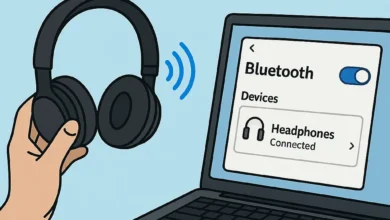What to do if the speaker does not connect to the phone via Bluetooth?

When a Bluetooth speaker fails to connect to a smartphone, users often face frustration while attempting to diagnose the root cause. This connectivity issue can stem from multiple factors—some universal across devices, while others are specific to particular operating systems like iOS or Android.
Common Causes of Connection Failures
- Bluetooth Compatibility Issues
- The speaker and phone may use different Bluetooth versions (e.g., 4.2 vs. 5.0), leading to pairing difficulties.
- Some older speakers may not support modern codecs (AAC, aptX) required for optimal performance.
- Software & Firmware Glitches
- Outdated Bluetooth drivers or firmware on either device can disrupt pairing.
- Bugs in the phone’s OS (e.g., iOS 17 or Android 14 updates) may temporarily break connectivity.
- Interference & Range Limitations
- Wi-Fi networks, USB 3.0 devices, or other Bluetooth gadgets can cause signal interference.
- Physical obstructions (walls, metal objects) weaken the connection beyond the standard 30-foot range.
- Device-Specific Problems
- iPhone Not Detecting Speaker: Could be due to Apple’s strict Bluetooth protocols or an unreset network settings configuration.
- Android Not Finding Speaker: Often related to incorrect pairing mode, battery-saving restrictions, or manufacturer-specific Bluetooth stack variations.
You may like: How to Connect Wireless Headphones to a Laptop
Basic connection errors
The wireless speaker connects to the phone via Bluetooth and maintains stable signal reception from the source at a distance of 10 to 30 m, depending on the version of the communication module used. At the same time, the smartphone can still be used in normal mode. Pairings can be created between several auxiliary and one main device at once.
It is important to add that Bluetooth transmission is a fairly stable way of transmitting audio signals to external acoustic devices.
Most often, the lack of a Bluetooth connection is due to some errors as mentioned below.
- The pairing mode is inactive in the portable speaker. For successful device detection, it must be enabled on both the speaker and the smartphone. In most cases, to activate, you just need to follow the included instructions. If there are none, it is enough to press and hold the power button until the built-in indicators flash or an audible alert appears.
- After the first connection, the speaker does not connect automatically. Usually, only smartphones and speakers of the same brand are capable of this. If the connection cannot be established again without additional tricks, you need to do it again.
- There is no sound, the speaker is on, the smartphone is on too. It is possible that the pairing was done with another device. If the mobile device was previously connected to another speaker, it may well do so again.
- The NFC module interferes. If both the speaker and the smartphone have it, then it is often impossible to use the usual Bluetooth communication channels. It is imperative to try to perform NFC pairing by bringing the device as close as possible to the switched-on wireless speaker and confirm the request that appears on the screen.
- The equipment is simply broken or not charged. You need to start checking by checking the smartphone. If you can connect it via Bluetooth with other devices, the problem is in the speaker. If the battery is discharged, you need to connect the device to the network until it is replenished and then try to turn it on.
- Smartphone operating system failure. If the connection is unexpectedly broken, it is recommended to reboot the device. It is quite possible that after this simple action,
- The pairing will be established in the normal mode.
- The pairing is unstable. The reason may be interference or exceeding the recommended connection range. It is worth bringing the device as close to the speaker as possible during the first pairing, giving it time for the signal to pass.
- The connection is not established without a password. If it is not specified in the documents for the speaker, or they are missing, it is worth trying a universal combination of numbers – 0000. In most cases, it is enough.
- Signal source – iPhone. Many budget devices cannot be connected to Apple smartphones due to the incompatibility of communication standards. It is worth choosing speakers whose specification indicates the ability to work with an iPhone.
How to Diagnose & Resolve the Issue
To accurately determine why a speaker won’t connect, users should:
- Restart both devices to clear temporary software glitches.
- Check for firmware updates on the speaker and phone.
- Reset network settings (on iPhone) or clear the Bluetooth cache (on Android).
- Test with another device to isolate whether the problem lies with the speaker or the phone.
By systematically evaluating these factors, users can pinpoint whether the issue stems from hardware limitations, software conflicts, or environmental interference—and apply the appropriate fix.
Key Takeaway:
Bluetooth connection failures require methodical troubleshooting. While some fixes (like repairing) work universally, others (e.g., iOS network resets or Android Bluetooth cache wipes) are OS-specific. Identifying the exact cause ensures a reliable solution.
Would you like a step-by-step guide for fixing connection issues on a specific device (e.g., iPhone 15 or Samsung Galaxy)? Let me know!


